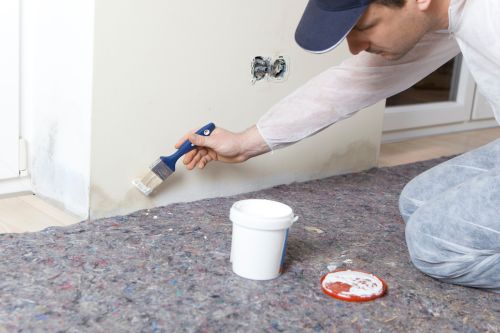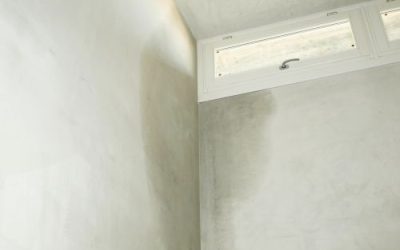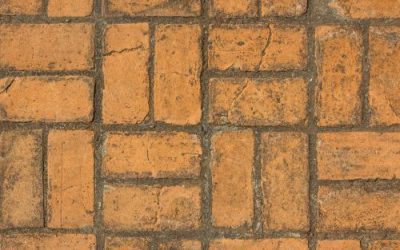Painting a damp wall may seem like a quick fix, but it’s like patching a leak: sooner or later the problem comes back, and with more force. If you’ve ever tried to cover damp patches with a fresh coat of paint and seen mould, bubbles and cracks rebel against your efforts, you know what we’re talking about. So what really happens when you paint without addressing the moisture? Let’s take a look.
The losing battle against damp
Imagine that you paint a wall and, after a while, you see those hateful bubbles that turn your work into a disaster. This happens because the moisture trapped in the walls creates an invisible enemy for the paint. Here’s what happens step by step:
- Bubbles and peeling: Moisture pushes paint out, leaving a cracked surface.
- Everlasting stains: Water finds its way through the paint, leaving visible traces of its presence.
- Fungus and mould: Instead of eliminating them, moisture creates a perfect environment for them to multiply.
- Constant repainting: All the effort ends up being in vain because the problem does not go away.
Contact our professionals
Why does this happen?
Dampness in the walls can come from many different places: from a small crack in the roof to a poorly ventilated room. These are the main causes:
- External leaks: When it rains, water finds any way to seep in.
- Internal condensation: Steam from bathrooms or kitchens gets trapped and ends up in the walls.
- Capillarity: Water rises from the ground as if it were black magic (but without any magic).
Solving these causes is not only necessary, but will also prevent you from wasting time and money on temporary solutions.
Real solutions for fearless painting
The key to winning the battle against damp is to attack the problem at its root. Here’s a step-by-step plan:
- Identify the source of the problem: Look for cracks, leaks or areas with insufficient ventilation.
- Repair and prepare the surface: Clean with specialised mould products and use caulking to repair cracks.
- Apply damp-proofing primer: This is your protective shield against water.
- Use breathable paint: Let the walls ‘breathe’ and prevent further moisture build-up.
But what if you ignore it?
If you choose to ignore the problem, be prepared for:
- Repeated expenses: Every few months you will have to repaint.
- Structural damage: Damp is not only ruining your paintwork, it may also be weakening your walls.
- Health problems: Fungus and mould affect air quality and your well-being.
The solution is in the hands of professionals
At Bartolomé Bas Pinturas we know that every damp problem has its own story. That’s why, before painting, we evaluate and solve the root causes so that you don’t have to deal with unpleasant surprises. Our team uses high-quality materials and the best techniques to ensure long-lasting results.
Don’t take a gamble with damp. Contact us and find out how we can help you transform your spaces into beautiful, healthy, problem-free places – your home deserves the best!
Other publications that may interest you
What paint to use for damp walls?
Damp walls are a common problem in many homes, especially in areas with humid climates or in poorly ventilated dwellings. Moisture not only affects aesthetics, but can also damage the structure of the house and the health of its inhabitants. In this guide, we will...
Transform your terracotta floors with a professional refinish
Terracotta floors bring a rustic, natural charm to any home, but over time they can lose their lustre due to wear and tear. Professional refinishing can rejuvenate these floors, bringing them back to their original appearance and improving their durability. Benefits...
How to remove stains from the wall without removing the paintwork
Keeping the walls of your home clean and stain-free can be a challenge, especially when you want to avoid damaging the paintwork. With the right techniques, you can remove different types of stains without compromising the finish of your walls. Whether you're doing it...




